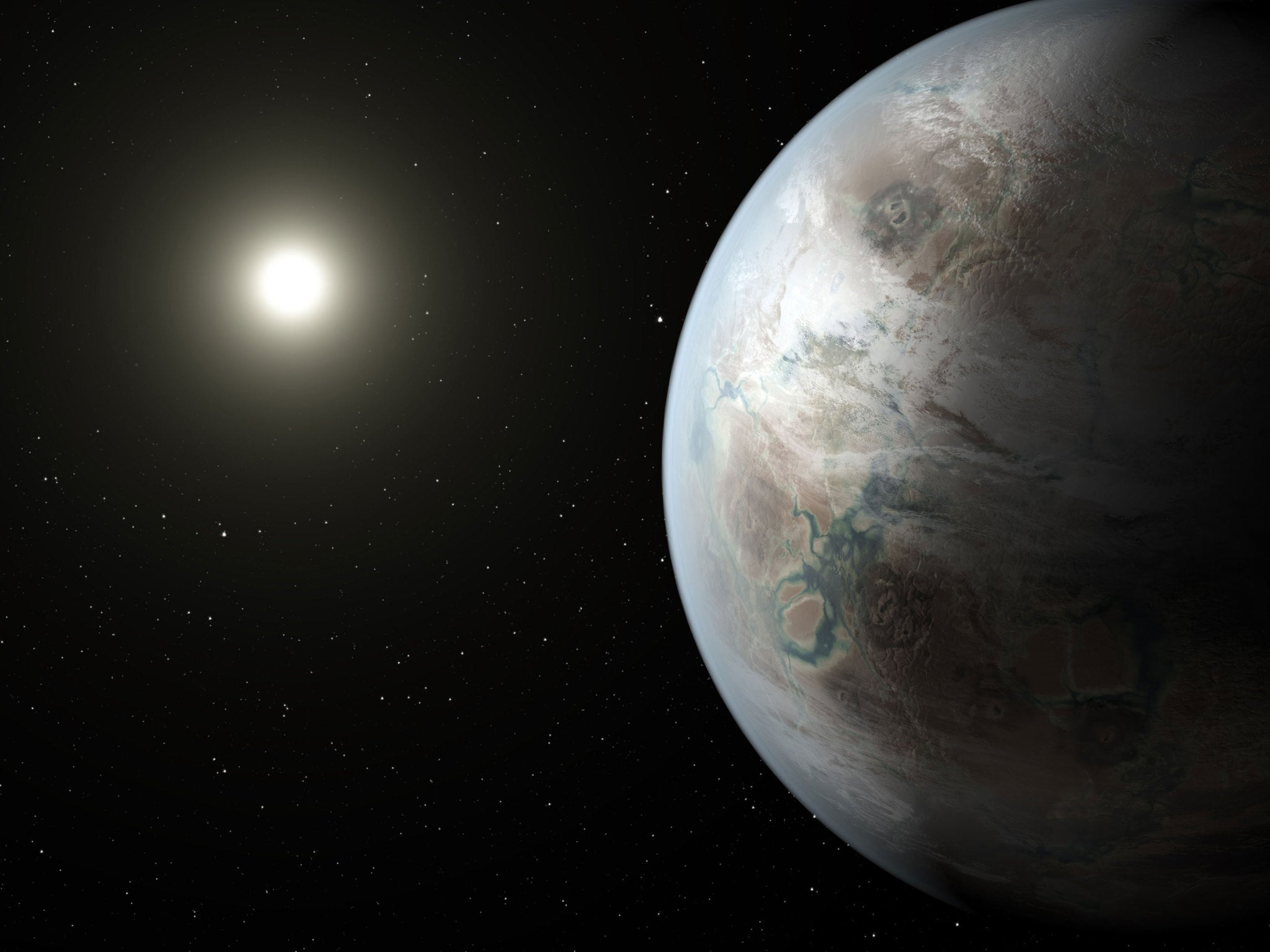Earth 2.0: What we know about Kepler 452b, the most Earth-like planet ever discovered
It's slightly warmer than Earth, slightly larger, could have liquid water on the surface and it's 1,400 light years away

Nasa scientists have announced the discovery of Kepler 452b, also known as 'Earth 2.0', an earth-like planet in our galaxy.
Over the course of years of data-gathering by the Kepler space telescope and even more analysis and work here on Earth, scientists confirmed the existence of the distant exoplanet, which is the most earth-like planet ever discovered.
Although the planet is far too far away to photograph, advanced Nasa technology means we know a surprising amount about this 'New Earth'.
It's the most similar planet to Earth that has ever been discovered
Beginning the conference, John Grunsfeld, associate administrator for Nasa's Science Mission Directorate in Washington, said: "Today we're announcing the discovery of an exoplanet that as far as we can tell is a pretty close cousin of Earth. It's the closest so far. It's Earth 2.0."
Everything about Kepler 452b - from its size, the length of its years, the estimated conditions on the surface - is very similar to Earth.
Years on Kepler 452b are about the same duration as they are on Earth
A year on the newly-discovered planet - the time it takes to orbit its star, Kepler 452 - lasts for 385 days, only 20 days longer than a year here on Earth.
That's much different to years on other, closer planets to Earth. A year on Venus, sometimes the closest planet to the Earth, lasts only 88 Earth-days. A year on Neptune, further out in our solar system, is the equivalent of 185 Earth-years.
It's spent billions of years within the optimal habitable distance of its star
Kepler 452, the planet's star, is around 1.5 billion years older than our Sun. If a planet is too close to its star, it will be too hot to host life. If it's too far away, it will be too cold.
Kepler 452b has been the perfect distance from its star for many billions of years. According to Jon Jenkins, the Kepler data analysis lead at NASA's Ames Research Centre, this means it's possible that it hosts life on its surface, or at least could have at some point in its history.
It could have active volcanoes and water on its surface
Kepler 452b is possibly the right temperature to allow liquid water to exist on the surface - as far as we know, this is essential for supporting life.
According to John Coughlin, a researcher at the SETI Institute in California, the Kepler team worked with geologists to find out the make-up of the planet. Due to its size and age, it's likely that it is a rocky planet, meaning it could have a volcanic system under its surface.
Humans could potentially survive in Kepler 452b's stronger gravity
The new planet is slightly larger than Earth, and is estimated to have twice the gravitational pull of our own planet. However, according to the scientists on the Kepler team, this doesn't mean it couldn't support life.
Jon Jenkins said that humans could "adapt" to the gravity, possibly becoming "more stocky over many generations."
"People already adapt to heavy weights - humans are built to do this kind of thing. The human body has an amazing ability to repair itself - so over time, humans could adapt."
Plants could potentially thrive there
The planet's star, Kepler 452, is slightly bigger than our own Sun. The added light and heat energy that the planet receives from the star not only means it is slightly warmer than Earth, but could also mean that plant life could thrive there.
And since plant photosynthesis is what produces the air we breathe, that means this essential building block of life has a good chance of living on Kepler 452b.
Jon Jenkins told the press conference: "The sunshine from Kepler's star is very similar to sunshine from our own star, and plants could be able to photosynthesise just the same."
"It would feel a lot like home."
You could even get a tan there
Dr Daniel Brown, an astronomy expert at Nottingham Trent University, said: "Kepler 452b receives the same kind of spectrum and intensity of light as we do on Earth. This means plants from our planet could grow there if it were rocky and had an atmosphere. You could even get a healthy tan like here on holiday."
Much more research on the planet is still being done, which will be able to confirm whether anything could thrive on Kepler 452b.
Unfortunately, it's pretty much impossible to get there (at the moment)
Kepler 452b is warm, possibly wet, and might be able to host plant life - however, it's 1,400 lightyears away.
A lightyear is the distance that a beam of light can travel in a year. Light travels at over 670 million miles per hour. Light from the Sun takes around eight minutes to reach Earth, so naturally, a trip to Kepler 452b would take an incredibly long time.
Nasa's New Horizon probe - the one that recently took the amazing pictures of Pluto - left Earth's orbit faster than any other spacecraft before it, at around 36,373 mph.
Kepler 452B, or Earth 2.0
Show all 10If a spacecraft carrying humans travelled at this speed towards Kepler 452b, it would take the unlucky astronauts around 25.8 million years to get there. To put that in perspective, early, primitive humans only evolved around 2.5 million years ago.
So if you're planning to take a trip to Earth 2.0, don't book your ticket until they make slightly faster spacecrafts.
Subscribe to Independent Premium to bookmark this article
Want to bookmark your favourite articles and stories to read or reference later? Start your Independent Premium subscription today.

Join our commenting forum
Join thought-provoking conversations, follow other Independent readers and see their replies